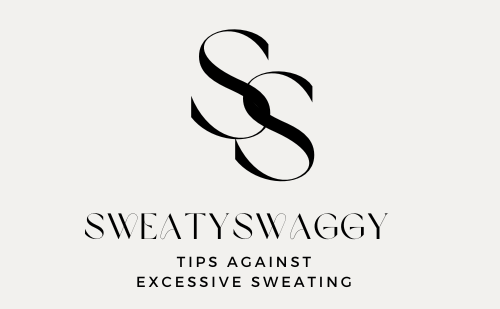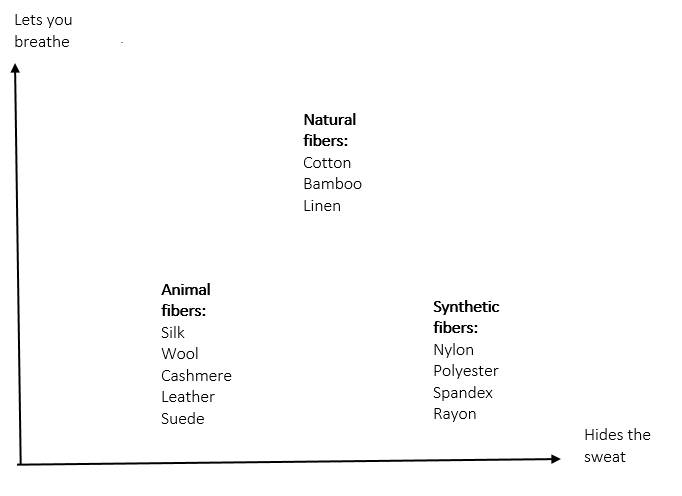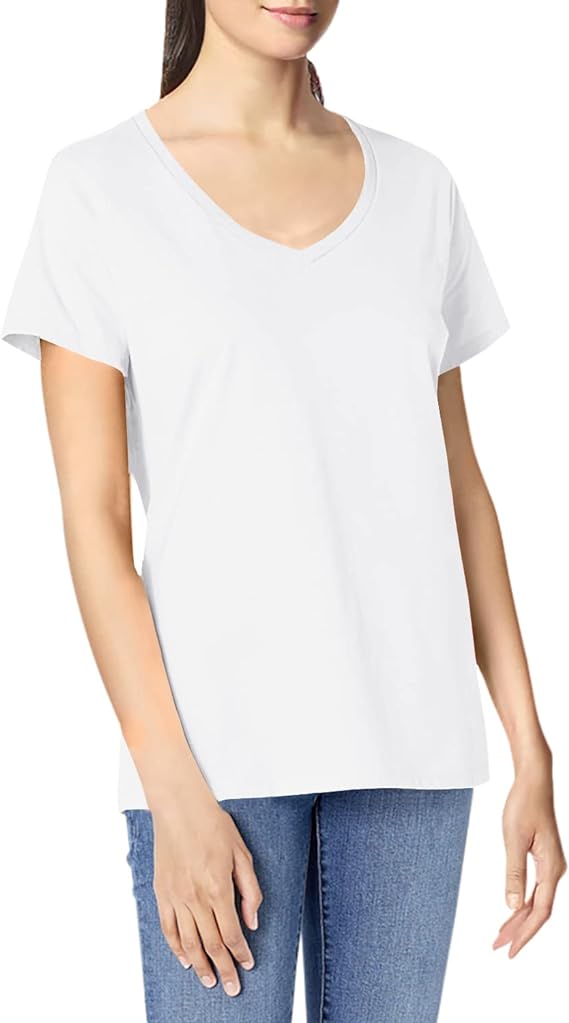This is a comprehensive and simple guide to teach you how to recognize breathable fabrics. Learn which fabrics can help you reduce or hide sweat, and which ones will make things worse.
We’re gonna look at the 3 main families of fabrics:
- plant fibers
- animal fibers
- synthetic fibers
PLANT FIBERS: Cotton, Bamboo, Linen, Denim
Natural fibers are your best friend because they are:
- breathable
- absorbent
- comfortable
- cheap
- vegan
- drying faster
- hiding sweat better (if you pick them in the right color)
- reducing body odors
Cotton
Cotton is by far the best and the most breathable fabric if you sweat too much. It’s:
- easy to find anywhere
- lightweight
- soft
- durable
- easy to wash
- cheap
Tips about cotton:
- Touch the fabric + check the labels: lots of stores have cotton-looking items that are actually a blend of cotton and synthetic fabrics (like lycra). And synthetic fabrics will make your sweat. So make sure you pick 100% cotton clothes! I usually go to Uniqlo for my 100% cotton t-shirts because it’s great quality and it’s affordable, but you can easily find some online too, just make sure you check the fabric description.
- Stick to white, black, and patterned cottons: sweat shows too much on pastel and bold colors, so pick clothes in the right colors to avoid sweat marks.
- Buy cheap white & nicer black clothes: If you want a white t-shirt, get a cheap one because it will quickly get yellow stains from the sweat. If you want something fancy, then buy it in black so that you won’t stain it and can keep it longer.
- Avoid wrinkles: cotton can wrinkle a bit, so if you’re lazy like me and don’t want to iron your clothes, then either go with tight t-shirts (but you will sweat more in tight things) or patterned t-shirts (you don’t see wrinkles as much when there are patterns on your clothes).
Bamboo
- Pros: bamboo is absorbent, breathable, soft, and resistant to odors!
- Cons: many sources including this article from the Guardian suggest that the process used to turn bamboo into fabric is not very environment-friendly. Also, bamboo is not easy to find in stores, so I personally don’t own any bamboo clothes. Do you? If so, I’d love to hear your thoughts on bamboo in the comments section!
Linen
- Pros: linen is a comfortable, absorbent, and breathable fabric. It also has this ‘tropical summer’ look to it!
- Cons: linen wrinkles so much, tough!
Denim
Denim is made of cotton, so it’s a pretty comfy, easy-to-find and cheap fabric.
Tips about denim:
The hardness and thickness of denim can vary based on your preferences:
- Thin and elastic denims: they may include some synthetic fibers. But it’s usually not a big deal because they tend to be made of more breathable fabrics (and more comfortable!) than thick denims. So you’ll sweat less less in a thin denim. But make sure you pick them in a dark shade so sweat marks won’t show!
- Thick denims: the ‘real’, ‘cowboy’-looking denims won’t be breathable, let’s be real. So they are gonna make you sweat more but they are so thick that sweat shouldn’t go through! If you really want a light shade pair of jeans, then a very thick fabric is best, to be safe! If you want light blue denim and want to play it even safer, then don’t get denim pairs of jeans but get denim clothes or accessories that won’t stick to your skin: a denim skirt, denim purse, denim wallet, etc.

I got the skirt a long time ago at Urban Outfitters and the t-shirt is Uniqlo.
RECAP ON NATURAL FIBERS
To avoid sweating too much, pick clothes made of plant fibers: they are breathable, absorbent, comfortable, easy to care and cheap.
Try to stick to 100% cotton (including denim).
Pick white, black, or patterned clothes so that sweat won’t show.
Simple, black cotton T-shirts are breathable and won’t show sweat marks!
ANIMAL FIBERS & FABRICS: Silk, Wool, Cashmere, Leather, Suede
Animal fibers are heavier and warmer, so they tend to make us sweat more. You can still wear them if you select the right piece, the right fit, and of course the right color.
Silk
Silk has such a luxurious aspect, but is it a breathable fabric? No, silk will make you sweat. A lot!
- The fabric tends to stick to the skin, so it can get uncomfortable.
- It is also quite expensive if it’s real.
- And it’s hard to care, so this is not an ideal fabric.
Tips about silk
- If you really want something in silk though, pick something that has a large fit, and is in a dark color.
- An alternative to silk is cupro. It shines and feels fancy like silk, while being a cheaper and more breathable fabric. I also find it more comfortable. This synthetic fabric is hard to care for though, and it easily snags and wrinkles.

I got it from Comptoir des Cotonniers, but a bunch of brands make cupro dresses.
Wool & Cashmere
They are warm and cozy for sure, but so warm it may not help with the sweating!
- These fabrics are more expensive.
- They need to be washed at cold temperatures, so they are harder to take care of.
- They may be itchy.
- Wool and cashmere don’t show sweat though so it’s not that bad if you don’t mind caring for them and sweating in them.
100% Merino Wool for Men and Women: Make sure you get your sweaters in Black or White, large enough, and that you wear cotton undershirts:
Tips about wool or cashmere:
- Get your sweaters large enough that they are not too close to your skin/armpits.
- Wear them with something underneath to sweat less:
- A cotton t-shirt: it is not visible under your sweater and it absorbs most of the sweat.
- A cotton button shirt: it looks cute/preppy, and you can take your sweater off when you get too hot ! Using layers of clothing is a good option to have cotton on your skin for comfort (and absorption!) while having another item on top for color and style!

My sweater is a linen one, and all my black sweaters come from Zara or Banana Republic.
Leather & Suede
Leather and suede are not breathable fabrics, but they always in style, so how to go around it?
Faux leather looks pretty cheap and because it’s synthetic it will make you sweat a lot. So it’s better to invest in real leather/suede. That way you’ll be able to keep that jacket/skirt/etc. for a lifetime and you won’t sweat as much as you would in a cheap, synthetic, version.
Tips about leather:
When you buy leather or suede clothes, make sure you pick well:
- If you want a leather jacket:
- I’m not gonna lie, it will make you sweat, but you’ll sweat less than if you had gotten a cheap faux leather jacket that would make you feel like you are sweating in a plastic jacket (Really. Been there, done that!).
- Be careful of the fit: you do not want it to be too tight around the armpits.
- Pay attention to the lining: avoid polyester lining at all cost, as it will make you sweat a LOT. Prefer jackets with cotton lining. Always. Really.
- Only wear your leather jacket when you are wearing sleeves so that you don’t sweat directly on the jacket’s lining. Because that could quickly become super pricey in dry cleaning!
- If you want leather pants or a leather dress:
- Avoid them if you can. You’ll find yourself drenched and they will stick to you and be very uncomfortable.
- If you do insist tough, pick them large so it’s not too tight in places you sweat and wear something underneath (like a legging or a tank top so you don’t feel too uncomfortable at least).
- Everything else:
- For women: I love leather skirts (but pick black ones to be safe!) because you can tuck your T-shirt in and wear tights underneath. That will help absorb and hide the sweat. It will also prevent having your skin in direct contact with the leather, which is super uncomfortable when you are wet.
- For both men and women: leather bags, wallets, shoes, etc. are great options to get nice leather pieces without sweating in them!

My jacket is from Ba&sh, I love it because the lining is 100% cotton so I sweat less in that than in cheap jackets (I had an H&M one before and it was a nightmare).
I love this Rebecca Minkoff bag because I can’t ruin the handle with my sweaty hands or armpits. And because it goes with everything.
The cheap alternative to leather:
If you’re not ready to invest money in a nice leather piece, then a good option may be a blended fabric of nylon + spandex.
Honestly, it’s not a breathable fabric, at all. Nylon makes you sweat. But at least it won’t show and will still have that cool leathery aspect.
I personally do not find it to look great for tops (looks cheap), but it can be good for bottoms.
I have a leather-looking pair of leggings made from nylon + spandex (see picture below) and they are comfy, look cool, and no one can tell I’m sweating in them. And I wear them in the winter, so that I don’t sweat as much in them either!

Overall, with leather and suede, go black because a beige leather or suede could turn dark brown if you sweat in it… not the look we want to go for!
RECAP ON ANIMAL FIBERS and FABRICS
When you wear animal fibers, ensure you wear cotton underneath (using layering) so that the cotton absorbs the sweat.
Pick your animal-fiber clothes in the right cuts: large enough so it won’t stick to your skin/armpits/etc.).
Get your leather in the right pieces (in accessories or jackets for example).
Select the right color: the leather in black, and the wool/cashmere in black or white. Avoid any other color, they show sweat more.
Avoid suede because it gets darker when it’s wet.
Getting leather accessories is the easiest way to get leather without having it stick to sweaty skin (make sure the bag handles are not in leather though: sweat will ruin them otherwise).
SYNTHETIC FIBERS: Nylon, Polyester, Spandex, Rayon
Synthetic fibers are generally pretty cheap and easy to find. But they tend to make us sweat more! Some of them are good at hiding sweat marks tough. Let’s take a look below.
Rayon
Rayon will make you sweat more than cotton but is not that bad because it is:
- lightweight
- soft like cotton
- cheap
- easy to wash
- absorbent
- breathable and lets the air flow
But as with any fabric, if you have a tendency to sweat excessively, then make you sure you pick your rayon clothes in white or black so they won’t show sweat marks.
Nylon
That fabric is strong and elastic but it feels like wearing plastic.
Nylon makes you sweat and does not dry out easily so stay away from it unless:
- it’s for your swimsuits, or
- it’s blended with spandex, like in yoga pants

Polyester
Polyester is resistant but it’s probably the worst fabric when you sweat too much.
Stay away from it unless it’s blended with spandex, in which case that can make for cool pants. I have fake-velvet pants made of a blend of polyester + spandex and they don’t prevent me from sweating but at least it doesn’t show! (picking battles here!). If you still end up getting clothes that contain polyester, then at least pick them in black.
Also beware of polyester lining in jackets: it will feel like your jacket is lined with plastic bags and will make you sweat a LOT. Get your jackets with cotton lining instead.
Spandex
Spandex is stretchy and comfy so it works well when blended with nylon or polyester.
It won’t prevent you from sweating, but at least it won’t show.
If it doesn’t show sweat, it does show your shapes though (since spandex is tight), so you’ll need to be comfortable with that if you decide to get legging/yoga pants with spandex in them!
RECAP ON SYNTHETIC FIBERS
Synthetic fibers will make you sweat so you want to avoid long sleeves or t-shirts in these fabrics but they are OK in swimsuits and yoga-type pants. Because if your swimsuits or yoga pants are in black synthetic fabrics the sweat marks won’t show at least.
CONCLUSION
Pick natural fibers as much as possible as those are the most breathable fabrics and they offer the best return on investment when it comes to both letting you breathe and hiding sweat.
Animal fibers like leather, wool and cashmere are OK if you wear natural layers underneath.
Synthetic fibers should be avoided as much as possible unless it’s in a blend of fabrics and is for a swim suit or yoga pants, then that’s fine.
Pick your clothes in black or white as much as possible. Or with patterns. Avoid pastel or bold colors that would show stain marks.

Now that you know how to pick breathable fabrics, learn about the other 2 rules part of shopping to hide sweat: picking the right color that hide sweat, and picking the right fit.







Pingback: How to Stop Sweat Stains? The complete list of 24 simple tips you can try today
I have bought a couple of pairs of mens pants (underwear) made from bamboo and Lycra. I’ve noticed that the fabric is great until now. Bobbles have started developing on the normally smooth material. Compared to the usual alternatives, these garments are more expensive. I’m surprised and disappointed that they may not last too long.
Pingback: How to prevent chafing and excessive sweat this summer? (16 tips)
Pingback: How to stop waking up drenched at night? (13 causes for night sweats and 20 tips to deal with it today)